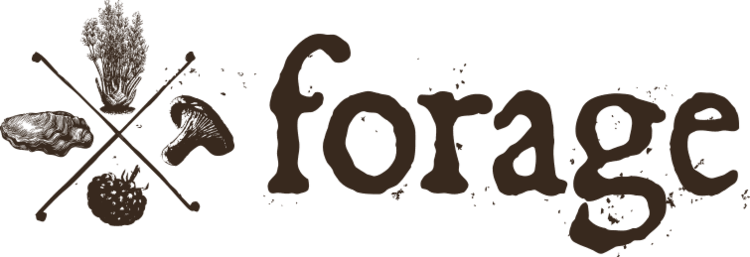Cauliflower Mushroom Look-Alikes: What You Need to Know
Cauliflower mushrooms (Sparassis crispa) are a delicious and highly prized edible fungus that grows in the wild. They are known to be one of the tastiest wild mushrooms but are notoriously hard to find. If you search long enough, you may get lucky and stumble upon one yourself.
Cauliflower mushrooms are characterized by their unique, "wiggly" shape and pale, creamy-white color. As their name implies, they resemble the head of a cauliflower, a member of the brassica family of vegetables. However, like many other wild mushrooms, cauliflower mushrooms have several look-alikes that can be mistaken for the real thing.
In this article, we'll discuss how to identify cauliflower mushrooцms, as well as some of the most common cauliflower mushroom look-alikes and the key differences between them. Once armed with this knowledge, you'll have no problem identifying a cauliflower mushroom with 100% certainty.
Identifying Cauliflower Mushrooms
Cauliflower mushrooms are unique in appearance, with a surface that looks like a cross between a brain and a head of cauliflower. Many people describe this mushroom as looking almost like a pot full of egg noodles.
Cauliflower mushrooms can grow quite large, with caps that are up to a foot or more in diameter. The outer surface of the mushroom is smooth and creamy white, while the inner flesh is firm and dense. The mushroom grows in a large round cluster, often at the base of pine or oak trees, and can be found in the fall in temperate forests across North America and Europe.
When identifying cauliflower mushrooms, there are a few key features to look for. First, the mushroom should have a ruffled, convoluted surface that resembles a head of cauliflower. The outer surface should be smooth and creamy-white, and the flesh should be firm and dense. Additionally, cauliflower mushrooms grow in clusters at the base of trees, mainly oak or coniferous trees.
If you need clarification on the identity of a mushroom you've found, it's always best to wait and consult an expert or field guide before consuming it. Although there aren't any mushrooms that resemble Sparassis crispa too closely, there are a few look-alikes you should be aware of so you can be absolutely sure.
Look-Alikes
While cauliflower mushrooms are unique in appearance, several other mushrooms can be mistaken for them. It's helpful to know what these cauliflower mushroom look-alikes are so you can make a positive identification when searching for this mushroom.
Some of the most common look-alikes include the pale-colored coral mushrooms. These mushrooms have a white-to-cream color and have a similar bunched shape that can be confused with a cauliflower mushroom to the inexperienced.
Below are some characteristics of a few different cauliflower mushrooms that look alike, so you can know what to look out for.
White Coral Fungus (Clavulina cristata)
White coral fungus is a delicate, branching mushroom that grows in a similar shape to cauliflower mushrooms. It has a white or cream-colored cap that is covered in small, finger-like projections. Unlike cauliflower mushrooms, however, the white coral fungus has a hollow stem and a softer texture.
They also tend to grow in clusters on the forest floor or decaying wood, unlike cauliflower mushrooms that grow at the base of live trees.
Crown Tipped Coral Fungus (Clavicorona pyxidata)
The crown-tipped coral fungus has a similar branching shape to cauliflower mushrooms, with a pale white color that may sometimes appear yellow or tan. However, it has a thinner stem and a more delicate texture, with a slightly translucent appearance.
You'll most likely find this species sprouting from dead logs, often in clumps, which is contrary to where Cauliflower mushrooms tend to be found.
Crested Coral Fungus (Clavulina coralloides)
Similar to the other two types of coral mushrooms mentioned above, the crested coral fungus is another branching mushroom that can be mistaken for cauliflower mushrooms.
It has a similar creamy-white color and bunched appearance, but it has a hollow branched shape instead of the cauliflower mushroom's characteristic ruffles. You'll find this mushroom also sprouting from decaying logs, which can mostly rule out the possibility of it being a cauliflower mushroom.
Key Differences
While these look-alikes can be confusing, several key differences can help you distinguish cauliflower mushrooms from coral mushroom look-alikes. First, cauliflower mushrooms have a dense and firm texture that sets them apart from the more delicate, translucent texture of other mushrooms.
Additionally, cauliflower mushrooms are typically found at the base of live conifer or oak trees. Coral mushrooms, on the other hand, tend to grow from the forest floor or dead and decaying logs.
Where a mushroom is growing can tell you a lot about how to identify it, so if you find what you think might be a cauliflower mushroom, but it's growing from a dead log, it's most likely not Sparassis crispa.
Finally, cauliflower mushrooms have a ruffled, creamy-white surface resembling egg noodles, while coral mushrooms may have finger-like projections or a more delicate appearance. Cauliflower mushrooms are typically much larger than coral mushrooms as well.
Final Thoughts
If you're unsure about the identity of a mushroom you've found, it's always best to be extra careful and consult an expert or field guide before consuming it. While cauliflower mushrooms are delicious, it's always a good idea to have a 100% positive identification before consuming any wild mushroom because consuming the wrong one could lead to serious illness or death.
However, don't let that discourage you from searching for the elusive but delicious cauliflower mushroom. As long as you have a trustworthy guidebook with you and keep in mind the look-alikes we just mentioned, you should be able to positively identify one without a second thought.
The cauliflower mushroom is a beginner-friendly mushroom due to its unique features and bright color that's easy to spot in a dark forest. Though you make a walk for miles before coming across one, they are without a doubt worth searching for.


